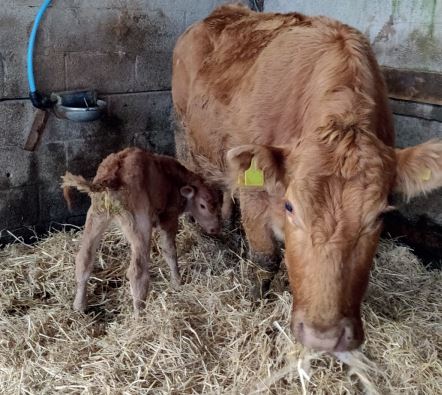Preventing Scour In Calves
23 February 2021Calf scour (diarrhoea) is one of the biggest issues associated with illness, poor growth and mortality in calves. The most common causes of calf scour in the first 3 weeks of life are rotavirus and coronavirus (both viral), cryptosporidiosis (parasitic), E.coli (bacterial) and Salmonella (bacterial). An outbreak of infectious scour is costly, in terms of calf losses, treatment costs and labour.
Putting in place practical measures will not only give your calves the best start in life but will protect them from scour and limit the potential impact from scour outbreaks.
With recent wintery weather many are facing challenges with wet, snowy conditions along with straw bedding shortages across parts of the country. Both of these increase the risk of scour as hygiene is reduced. Housing hygiene is key in preventing calf scour. Wet, dirty and insufficient bedding will allow bacteria, parasites and viruses to thrive. Ensuring calving sheds and pens are well bedded with good amounts of dry straw is crucial to maintain clean and dry calving areas and reduce the risk of infections. Straw might be relatively expensive and with stocks looking tight (a predicted late turnout may well be putting pressure on straw stocks) it is still cost effective to ensure calving cows and young calves are well bedded compared with calf losses.
Vaccination
Vaccinations against rotavirus, coronavirus and certain types of E.coli infection can be given to pregnant cows between 3 and 12 weeks prior to calving. Having a relativity accurate calving date is important for effective use of these types of vaccine. The protection against these causes of scour is transferred to the calf via colostrum (in the colostral antibodies) so good colostrum management is essential.
Colostrum
Ensuring sufficient colostrum is critical in providing calves with a good immune system in order to help protect them from infectious diseases. Calves should receive colostrum in the first 2 to 3 hours of life. Calves ideally should consume 10% of their body weight in the first 12 hours of life. So for example a 40 kg calf should have 4 litres of colostrum. For calves which have had a prolonged or difficult calving and or have a poor suck reflex colostrum should be given by a bottle or stomach tube. Remember good cow nutrition is essential for good colostrum quality. Review cow rations now if you have concerns.
Most cases of scour tend to occur later in the calving period due to infection build up. A tight calving period has the advantage of helping to reduce the age spread of calves within a group. Moving calves which have developed scour out of the main calving pen will minimise the spread to other calves. Scouring calves should be isolated from other calves in a clean, warm and dry area. Once the calf has recovered, remove the contaminated bedding.
Hygiene
Hygiene of calving equipment is also important to reduce the risk of scour. Wash and disinfect stomach tubes, thermometers etc. thoroughly after every use. If possible disinfect and clean out the calving shed between batches of calves being born. Consider separating calves by age into groups (if you have space) which will lessen the risk of a scour breakout. Older calves can potentially be carrying the organisms (without showing symptoms or being unwell themselves) thus being a potential source of infection for younger vulnerable calves.
Please refer to the FAS Calf Scour Practical Guide for further reading.
Sarah Balfour, sarah.balfour@sac.co.uk
Sign up to the FAS newsletter
Receive updates on news, events and publications from Scotland’s Farm Advisory Service

